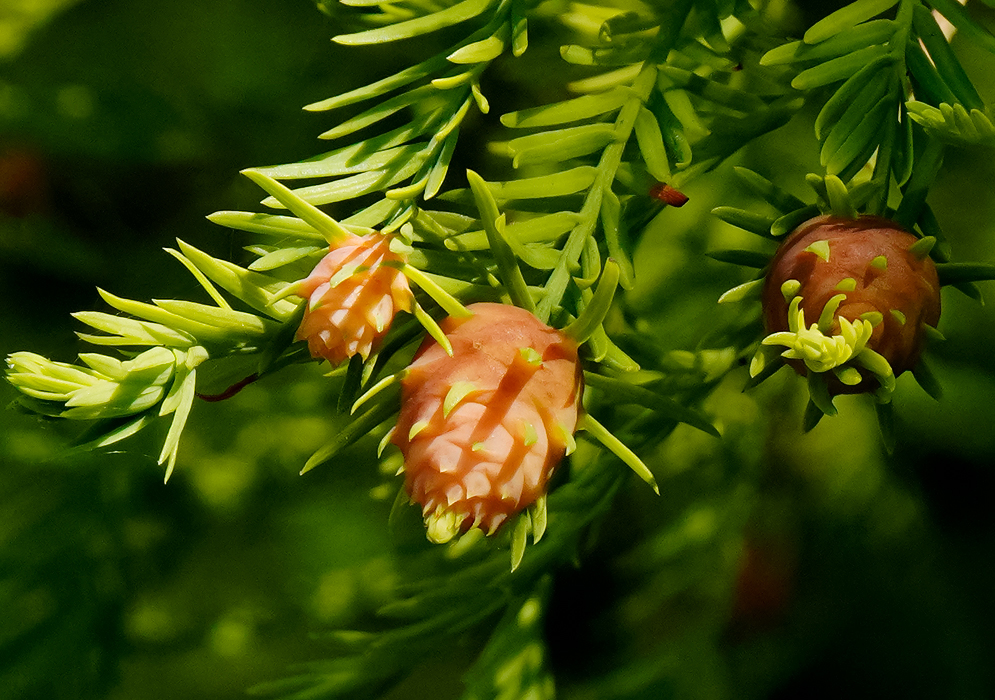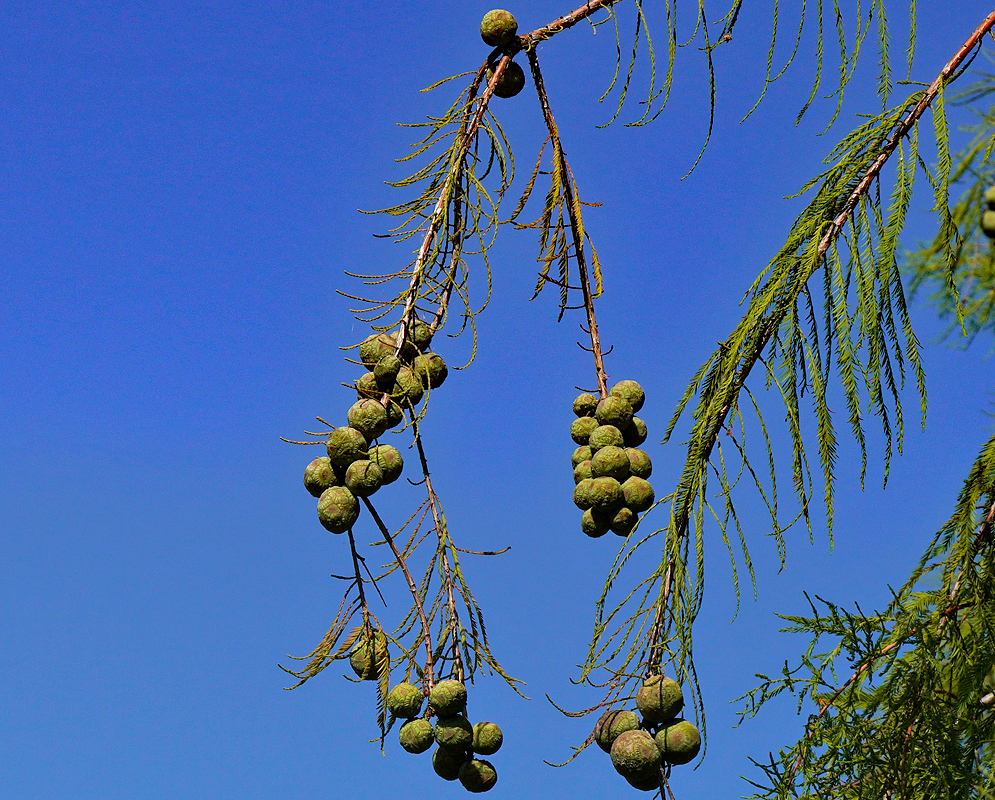This post has 11 Simple Fields-fields attached. Show fields.

Taxodium distichum is native to the southeastern United States, particularly thriving in the wetlands of the Gulf Coast and the lower Mississippi River Valley, where it naturally occurs in swampy and seasonally flooded habitats. This deciduous conifer has adapted remarkably well to life in waterlogged soils, developing unique "knees" or pneumatophores that rise from its root system, likely to aid in gas exchange in poorly oxygenated environments. Known for its longevity and resilience, it can live for hundreds of years, with some specimens reaching over 1,000 years. The tree's wood is highly resistant to decay, making it valuable historically for construction, especially in applications exposed to moisture, such as docks, bridges, and boats. Although its wood is less commonly harvested today, the durability and rich, reddish color continue to make it prized for specialty items, including furniture and outdoor structures. This tree has fine, feathery foliage turning a warm copper or russet in fall before shedding, which is unusual for a conifer. It has earned recognition in horticulture, with some cultivars developed for smaller gardens, including ‘Peve Minaret,’ a compact variety favored for its dense, upright growth. The bald cypress has significant ecological value, providing habitat and food sources for various wildlife species, particularly in swamp ecosystems where its dense roots help stabilize soil.



